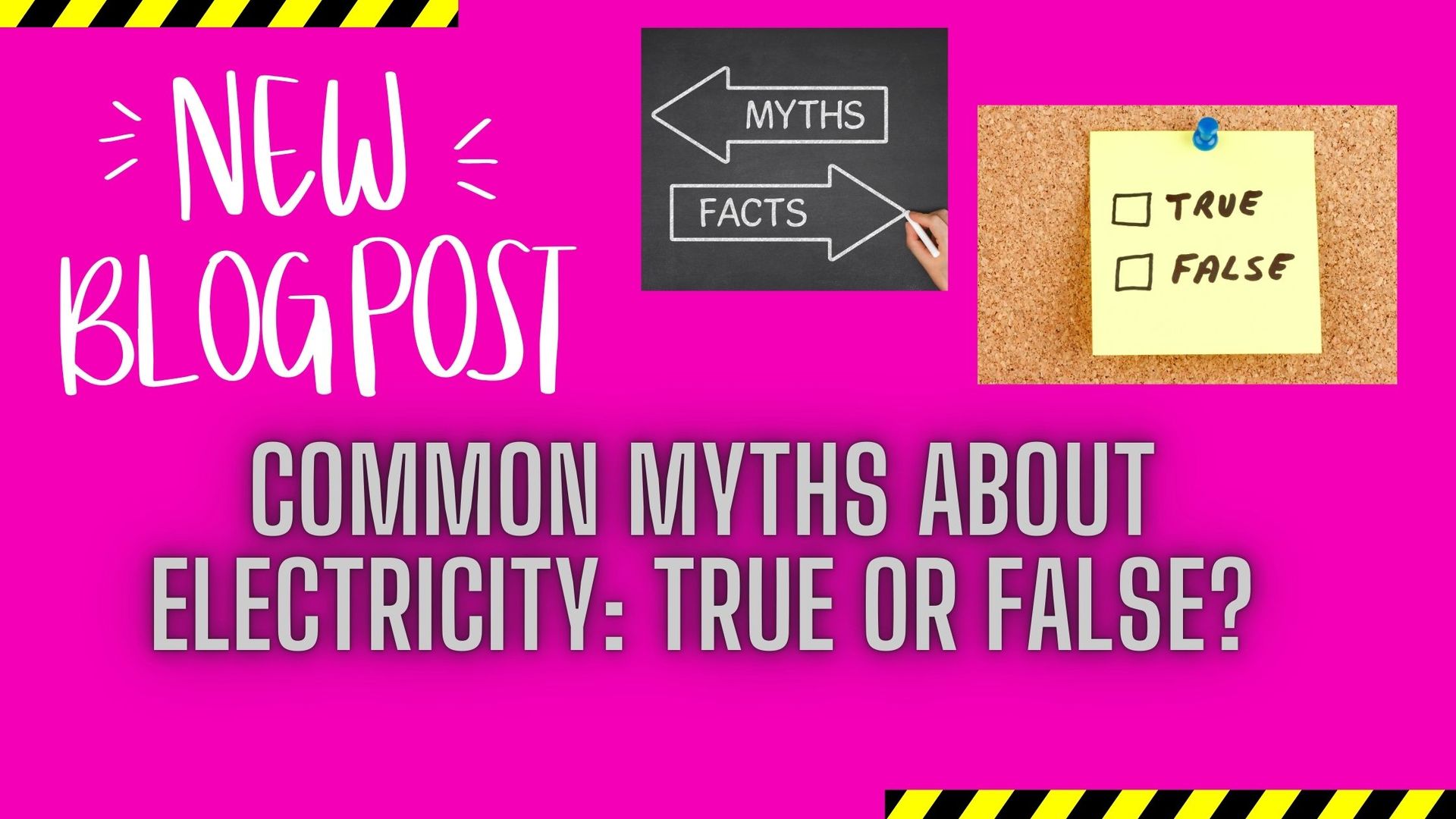Common Myths About Electricity: True or False?

Electricity is an essential part of our daily lives, but there are plenty of misconceptions about how it works and how to stay safe. Some myths are harmless, while others could put you or your property at risk.
So, let’s bust some of the most common electricity myths and separate fact from fiction!
1. Myth: Low Voltage Means No Danger
⚡ False! Even at low voltages, electricity can be dangerous. While high voltage is more likely to cause serious injuries, even standard household electricity (230V in the UK) can result in severe electric shocks, burns, or fires.
✅ Reality: any live electrical current can be hazardous. That’s why Residual Current Devices (RCDs) and properly maintained wiring are essential for safety.
2. Myth: Power Lines Have Insulation, So They’re Safe to Touch
⚡ False! Many people believe overhead power lines are covered in insulation, but most are actually bare conductors. Birds can sit on them because they aren’t grounded—but if you touch one, you complete the circuit, and the results can be fatal.
✅ Reality: always stay at least 10 metres away from fallen power lines and never assume they are safe.
3. Myth: Rubber Gloves and Shoes Will Protect You from Electric Shocks
⚡ Partly True, But Not Always! While pure rubber is a great insulator, most everyday rubber gloves and shoes contain additives that can conduct electricity. Unless they are specifically designed for electrical protection, they won’t keep you safe.
✅ Reality: if you need to work near electricity, always use professional, insulated safety gear and follow proper precautions.
4. Myth: If a Wire Looks Fine, It Must Be Safe
⚡ False! Electrical wires can appear intact while hiding serious internal damage. Worn-out insulation, overheating, or rodent damage can increase fire risks without any obvious external signs.
✅ Reality: regular electrical inspections (EICRs) can help detect hidden faults before they become hazardous.
5. Myth: Plugging Too Many Devices into One Extension Lead is Safe
⚡ False! Overloading an extension lead can cause it to overheat and catch fire. Even if all your devices seem to work fine, the total wattage could exceed the lead’s limit, leading to dangerous electrical failures.
✅ Reality: never exceed the maximum current rating of an extension lead, and always plug high-power appliances directly into wall sockets.
6. Myth: Household Circuit Breakers Will Always Prevent Electrical Fires
⚡ False! While circuit breakers help protect against short circuits and overloads, they don’t prevent every fire risk. Loose connections, faulty appliances, and overheating sockets can still ignite without tripping the breaker.
✅ Reality: regular electrical maintenance and professional inspections are crucial for preventing electrical hazards.
7. Myth: It’s Safe to Do Small DIY Electrical Jobs Without a Professional
⚡ False (and Illegal in Some Cases)! In the UK, Part P of the Building Regulations states that certain electrical work must be carried out by a qualified electrician. DIY mistakes can cause electric shocks, fires, or even invalidate your home insurance.
✅ Reality: always hire a qualified electrician for major electrical work, especially when dealing with consumer units, new circuits, or rewiring.
Pro tip: see our blog When DIY Isn't Enough for further information.
Key Takeaways: Don’t Fall for Electrical Myths!
🚫 Electricity is powerful and unpredictable. Believing in myths can put your safety at risk.
✅ Always follow best practices, book regular inspections, and call a professional when in doubt.
Need expert advice on electrical safety? Crannis Technology Services Ltd is here to help! Contact us today on 01793 629629 for reliable, professional electrical services across Swindon.
📞 Get in touch for an expert consultation!




